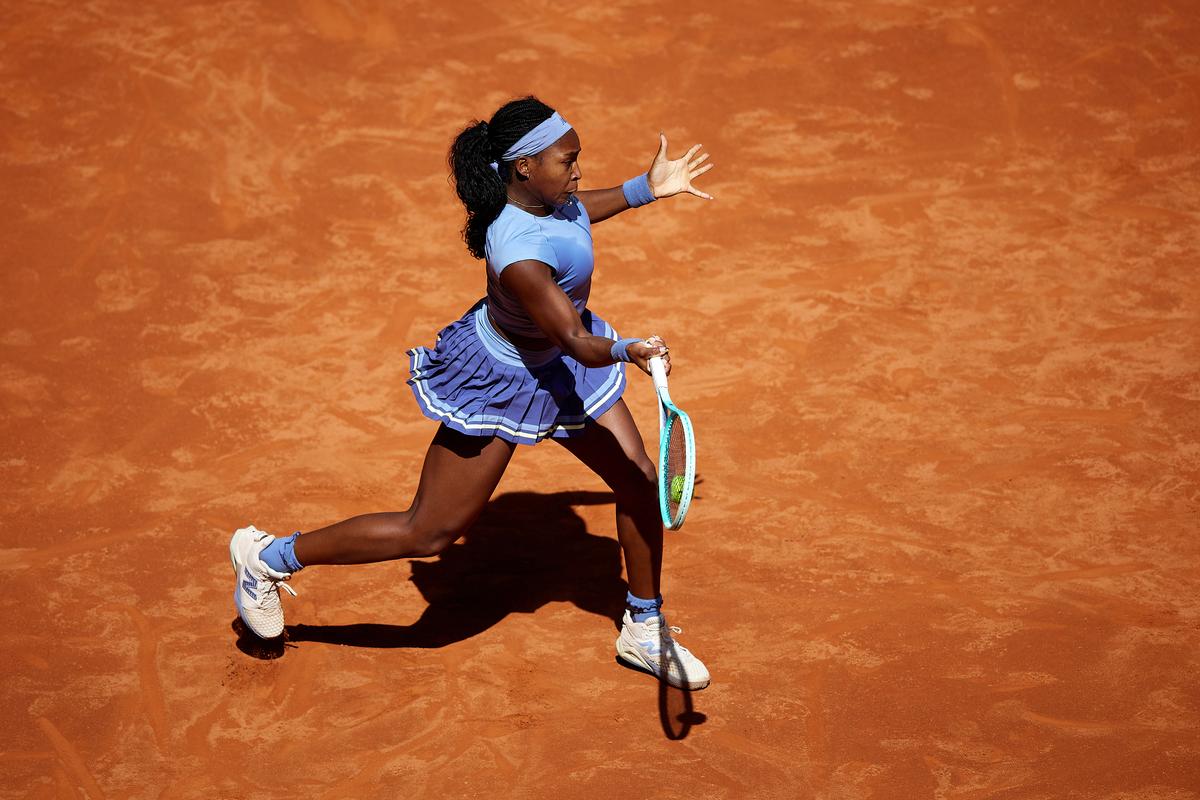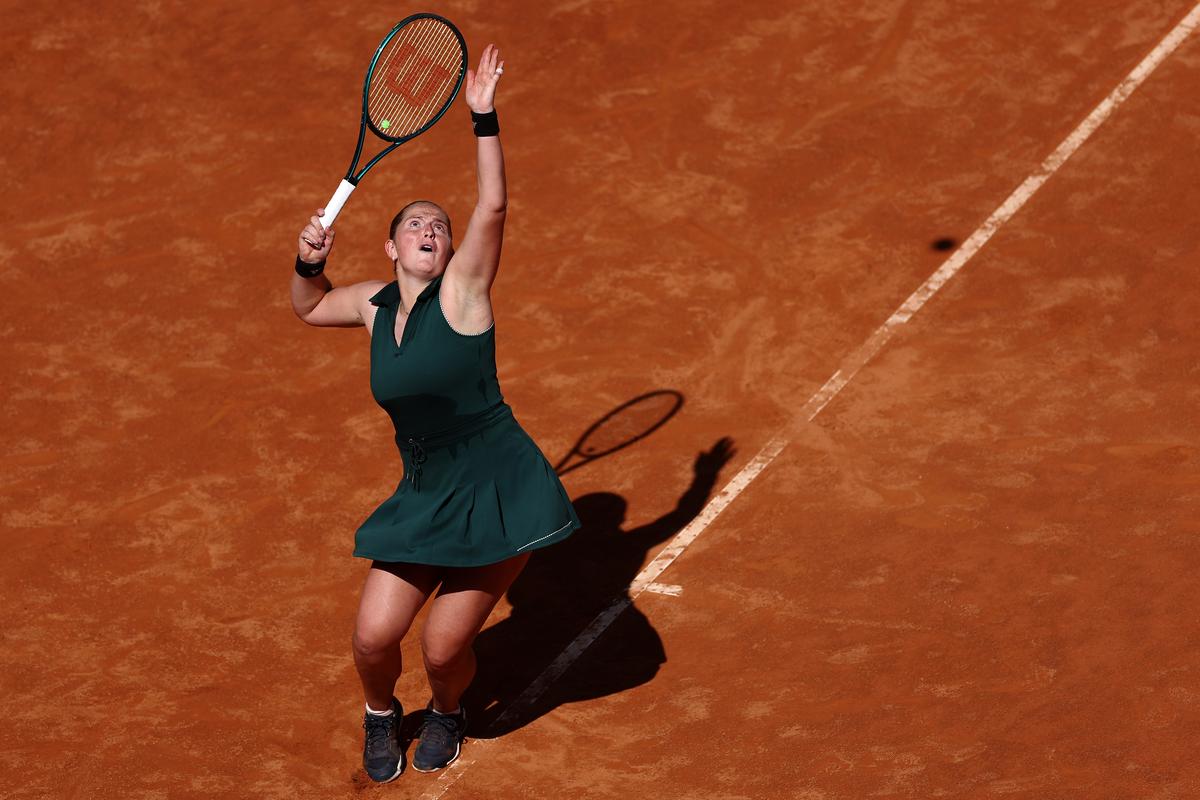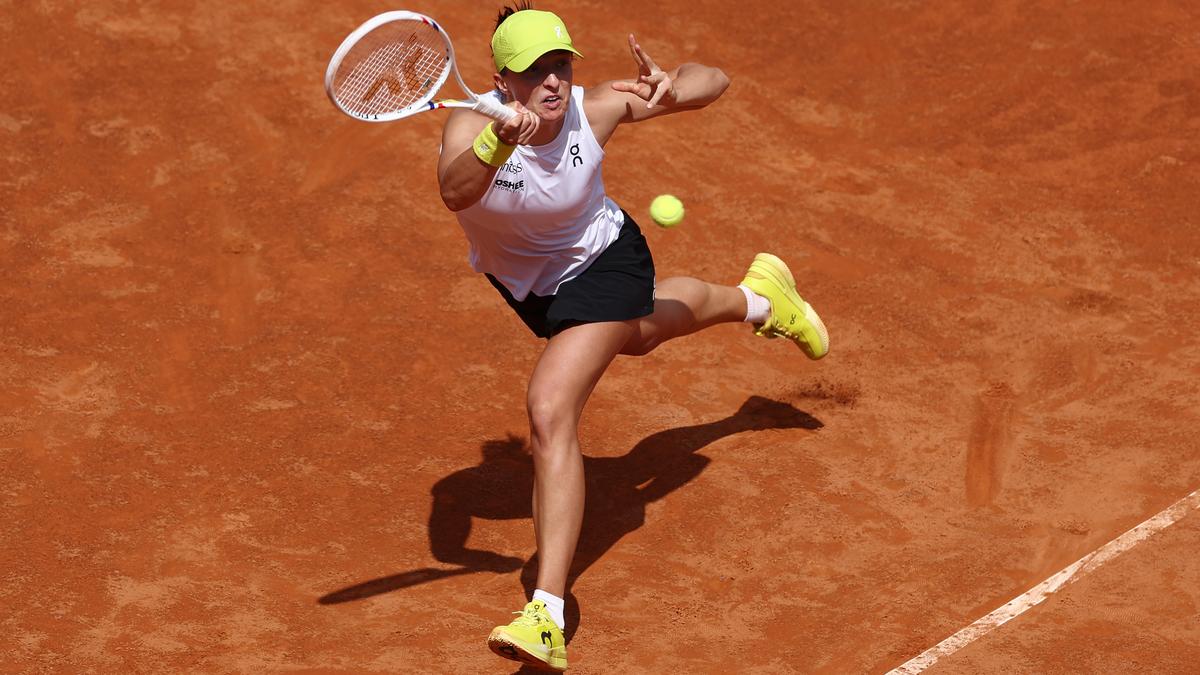Women’s tennis, compared to the men’s game, hasn’t had a single dominating force on clay. No female player has really come close to being as synonymous with the surface as Spaniard Rafael Nadal, whose giant shadow hovers over every inch of red dirt all over the world.
This is not to say that there have been no great dirt-ballers among women. After all, Chris Evert, Steffi Graf, Monica Seles, Arantxa Sanchez-Vicario, Justine Henin and Serena Williams have 26 French Open titles between them, with the most being Evert’s seven and the least Seles, Sanchez-Vicario and Williams’ three each.
Levels of suspense
It’s just that no tournament on clay was sucked out of all suspense with regard to the winner like it regularly happened in the men’s game with Nadal in the draw. Henin, at her best, did give off the vibes of a transcendental clay-courter, winning four Roland-Garros titles between 2003 and 2007. But compared to Nadal’s 14, it was more a blindingly brilliant flicker than a raging fire.
With the 2025 edition of the French Open getting underway on Sunday, the signs are that this trend will continue, for Iga Swiatek, the three-time defending and four-time Roland-Garros champion, and one of only three women to have won three in a row in Paris in the Open Era, has gone off the boil.
The 23-year-old is without doubt the best on clay from the present generation and, for a significant while, even threatened to be ‘Nadalesque’. She idolised the 22-time Slam winner, sneaked into stadiums to catch a glimpse like a lovestruck schoolkid and even said she might stop watching tennis after Nadal retired.
Mission Paris: Aryna Sabalenka has been the player to beat this year, having reached six finals in nine tournaments. Out to prove that she is as adept on the red dirt as she is on hard courts, the 27-year-old has been working hard on her clay-court game. | Photo credit: Getty Images
But now, Swiatek doesn’t quite look the part. For the first time in five seasons, she hasn’t won a tune-up — not even reached a final — ahead of the season’s second Major, and her once formidable grip has loosened. While it is normal for memory to exaggerate present-day struggles and mask past achievements, even Swiatek is under no illusion as she said in Rome that “it would be stupid to expect too much because right now, I’m not able to play my game”.
Can World No. 1 Aryna Sabalenka take advantage? The Belarusian has been the player to beat this year, having reached the final in six of the nine tournaments she has entered, winning three of those. What should give her confidence is that she is playing at near-peak level, is almost 4,000 WTA points clear of second-ranked Coco Gauff, and won in Madrid and finished runner-up in Stuttgart, two key warm-up competitions.
For a while, Sabalenka has been out to prove that she is as adept on clay as she is on hard courts. Seventeen of her 20 Tour-level trophies, including three Majors, may have come on the acrylic, but she is a three-time winner in Madrid and a four-time runner-up in Stuttgart. Of the seven reverses in clay-court finals, four have come against the very best — Swiatek.
Profiting during a downturn
But with the Pole going through a downturn, Sabalenka can surely fancy her chances. It is worth noting that Madrid’s altitude and Stuttgart’s indoor conditions do favour players like Sabalenka, who have a big serve and crushing groundstrokes. But as data analyst Jeff Sackman outlined in an article on Tennis Abstract just after her win in Madrid, the slowness of the Parisian clay shouldn’t be a limiting factor for Sabalenka.
Against her overall Tour-level career win percentage of 71 (364-151), Sabalenka’s success rate on clay is 70 (81-34). Collating data across the events leading up to the 2024 French Open, Sackman determined that the clay in Paris was the slowest (rating of 0.66 to Madrid’s 0.82), but that didn’t alter the 27-year-old’s approach.

Don’t count her out: A former finalist in Paris, Coco Gauff has incredible retrieving skills. Despite dealing with a problematic serve and forehand, she managed to reach back-to-back finals in Madrid and Rome. | Photo credit: Getty Images
Her average rally length in Madrid was 3.30. At Roland-Garros, it was a comparable 3.54 and at Rome 3.25. For a huge server like Sabalenka, the percentage of unreturned serves is typically high. Even in this, she had near equivalent numbers, the pace of the court notwithstanding. If it was 30.4% in Madrid, it was 31.6% in Rome and 27.2% at the French Open.
These metrics make sense only if they have translated into success, and here, Sabalenka’s record isn’t too bad. In 2023, she lost a close three-set semifinal at Roland-Garros to Karolina Muchova, and in 2024, she made the final in Rome (losing to Swiatek) and lost another tight three-set contest in Paris while battling an illness, this time in the quarterfinals to Russia’s Mirra Andreeva.
“I’ve been working really hard and improving on bringing variety into my game,” Sabalenka said after the Madrid triumph. “My touch game is much better right now; [I’m] trying to come to the net… I’m not sure if it’s really successful so far, but I’m trying. It’s always ‘work on yourself’ and always looking for something to improve and get better at.”
What gives Sabalenka an opportunity at Roland-Garros is the openness of the field. Apart from Swiatek’s loss of form, Gauff, despite reaching back-to-back finals in Madrid and Rome, still looks undercooked. She is a former finalist in Paris (2022) and has incredible retrieving skills, but her serves and forehand have turned problematic again. In the 3-hour, 32-minute slugfest against Qinwen Zheng in the Rome semifinals, Gauff accounted for a whopping 16 double-faults.
Worthy adversaries
However, Jasmine Paolini, who recently conquered Rome and is now up to No. 4, and Jelena Ostapenko, the all-action, supremely attacking 2017 Roland-Garros champion, can prove to be worthy adversaries.

Dangerous floater: Jelena Ostapenko, a former champion in Paris, boasts of an astonishing 6-0 record over Swiatek and defeated Sabalenka in the recent Stuttgart final. | Photo credit: Getty Images
Paolini was a surprise finalist at the 2024 French Open, but by reaching the Wimbledon final immediately after and staying in the top-10 for nearly a year, the 29-year-old Italian has shown that she is not one to be trifled with. Ostapenko is a dangerous floater, and the 27-year-old Latvian boasts of an astonishing 6-0 record over Swiatek and defeated Sabalenka in the Stuttgart final last month.
What Sabalenka should also be wary of is her own record in crunch matches. The Belarusian has lost 17 Tour-level summit clashes from the 37 she has contested, including at the 2025 Australian Open to Madison Keys and the 2023 US Open to Gauff. As a top-five player, and as No. 1, she has lost as many finals as she has won (5-5 and 3-3).
There is also the likely meeting with Swiatek in the last-four. The Pole may have dropped down to No. 5 — out of the top three for the first time since March 2022 — and first has to get past Paolini in the quarterfinals, but playing a bona fide red-dirt expert will not be on most people’s bucket list.
“Right now, I’m stronger than ever, physically and mentally, and also my game improved a lot,” Sabalenka insisted in Rome, where she lost to Zheng in the quarterfinals. “So I really hope this is the year where I’m going to look back on the clay-court season and be super proud of myself.”
Published – May 23, 2025 11:30 pm IST
